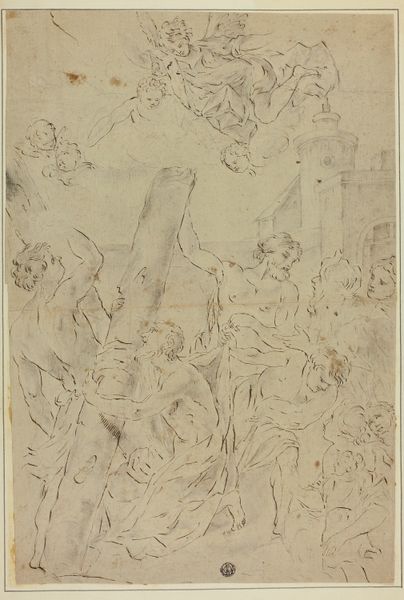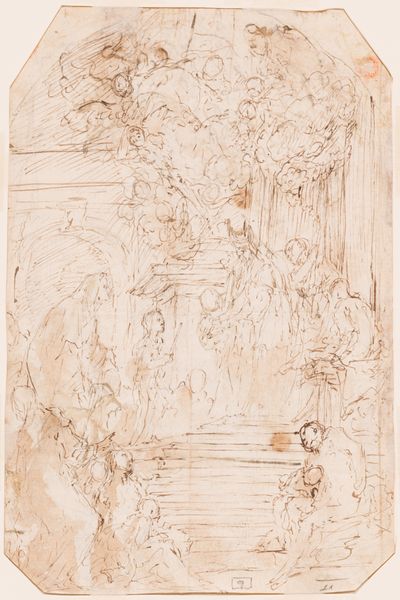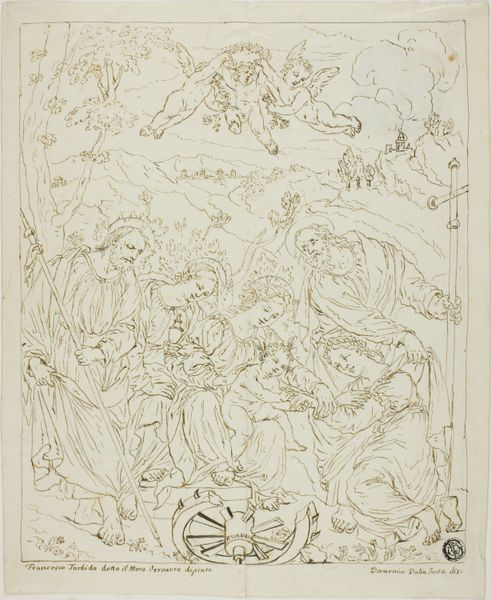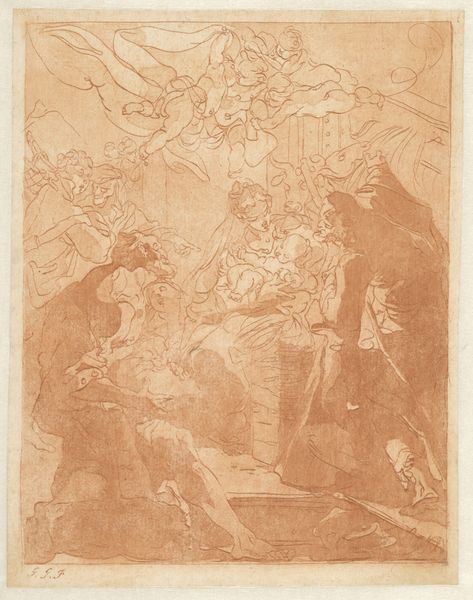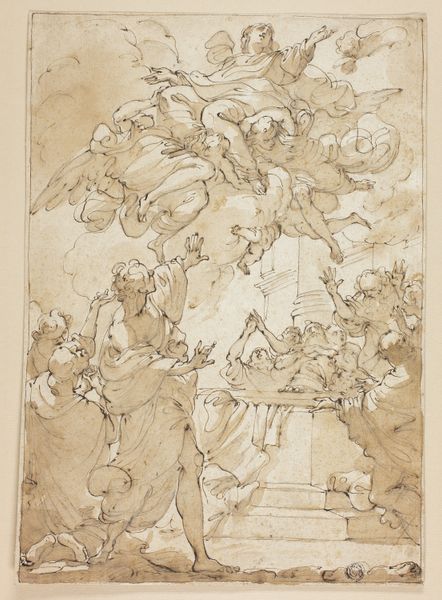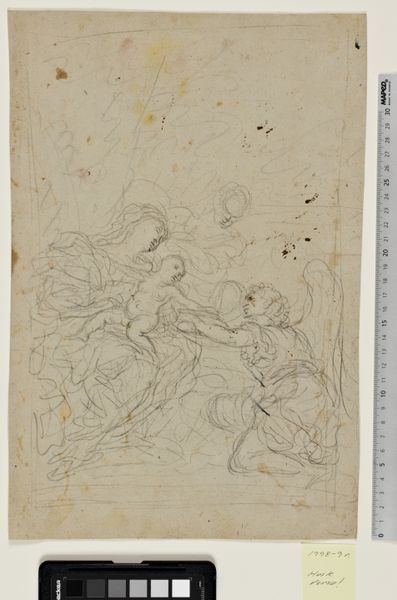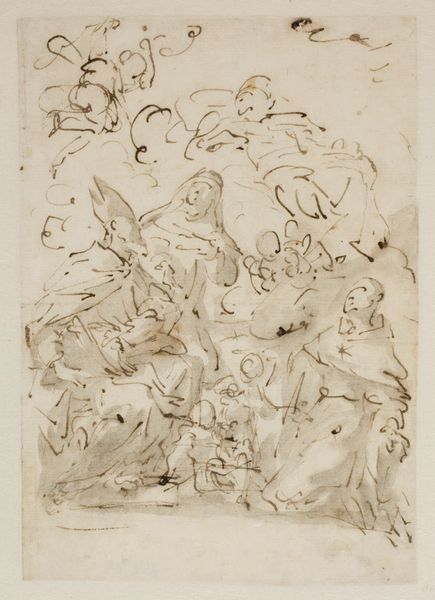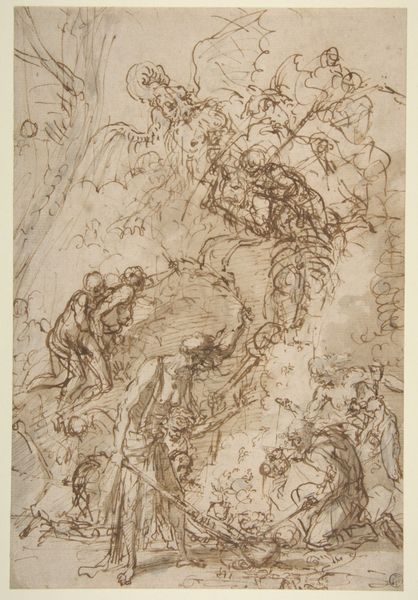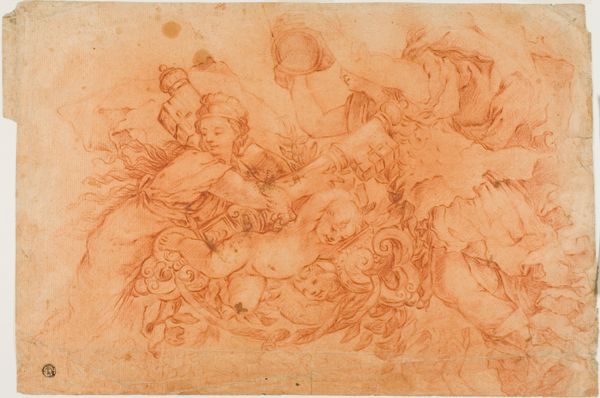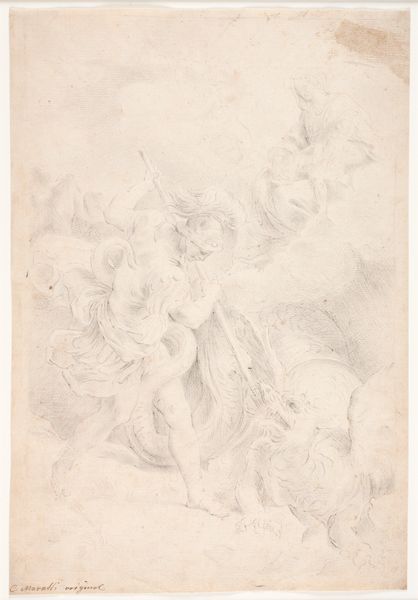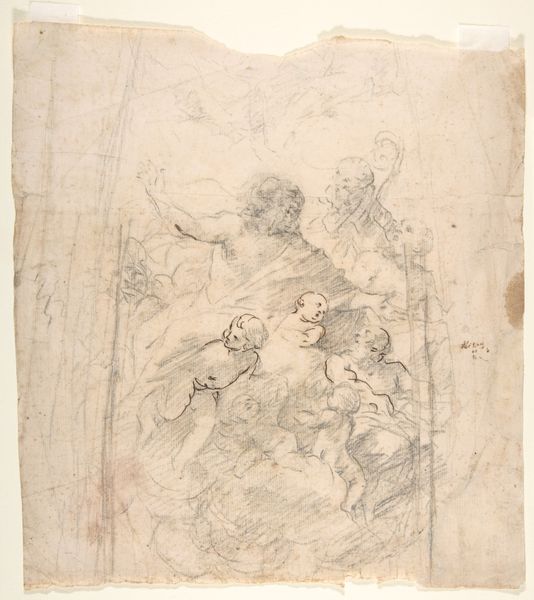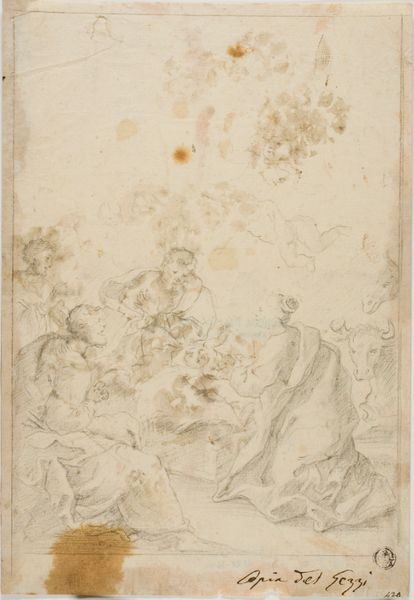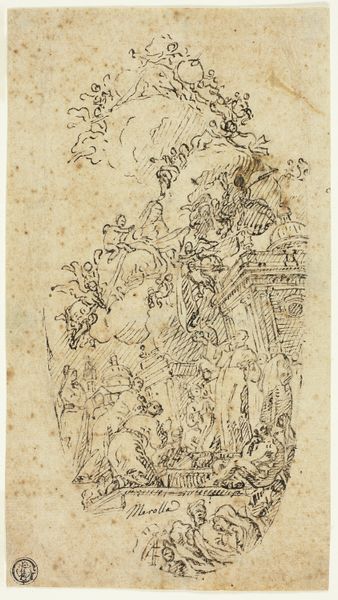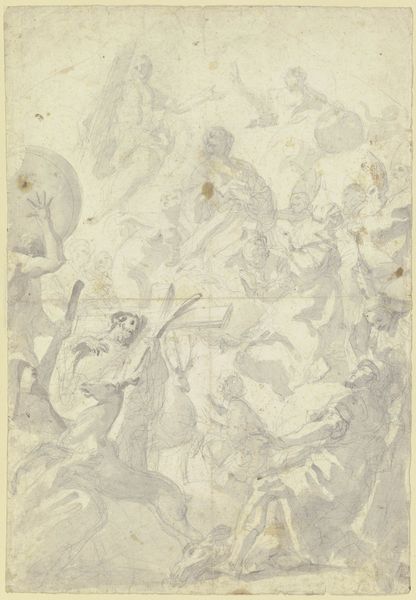
Drunken Silenus and Decorative Sketches: Studies for the Tazza Farnese (recto); Two Putti Fighting: Study for the Galleria Farnese (verso) 1599 - 1601
0:00
0:00
drawing, paper, ink, pen
#
drawing
#
allegory
#
mannerism
#
figuration
#
paper
#
ink
#
pen
#
history-painting
Dimensions: 204 × 177 mm (primary support); 284 × 177 mm (with overlays)
Copyright: Public Domain
Editor: This is Annibale Carracci’s drawing, "Drunken Silenus and Decorative Sketches: Studies for the Tazza Farnese," created between 1599 and 1601. It's done in pen and ink on paper. It feels almost like a snapshot into the artist's mind, a collection of ideas swirling around. What do you see in this piece, looking beyond the immediate subject matter? Curator: Primarily, I observe a study in form and line. Note how Carracci uses varied densities of hatching to suggest volume and depth. The composition, though seemingly disparate, reveals a deliberate arrangement. Observe how the rhythmic curves of the decorative sketches at the top counterbalance the more solid, grounded figures below. He seems to be exploring the potential of line itself. Editor: So, the appeal is not necessarily in the narrative being depicted, but rather in how Carracci is manipulating the materials? Curator: Precisely. While the subject matter—the drunken Silenus and sketches for the Tazza Farnese—certainly provides a point of departure, the essence of the work lies in the interplay of forms. Consider, too, the duality presented by the recto and verso studies, unified by a common material support. Is this merely a collection of preparatory sketches or something more intentionally constructed? Editor: It’s interesting to think about it as more than just sketches. It's almost like the process itself becomes the art. Curator: Exactly. Carracci allows us access to his artistic thinking. Through an emphasis on materiality, line, and form, the sketches transcend their immediate purpose and invite contemplation of their intrinsic artistic qualities. Editor: I see that now. Thanks! It’s helped me to think about what qualities constitute a finished work. Curator: Indeed, it blurs the lines between concept, preparation, and completed form, offering insight into artistic intention through form.
Comments
No comments
Be the first to comment and join the conversation on the ultimate creative platform.
